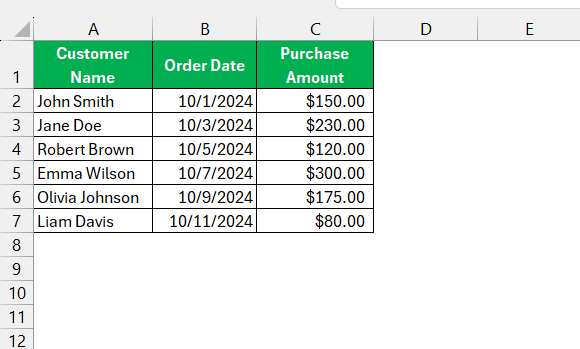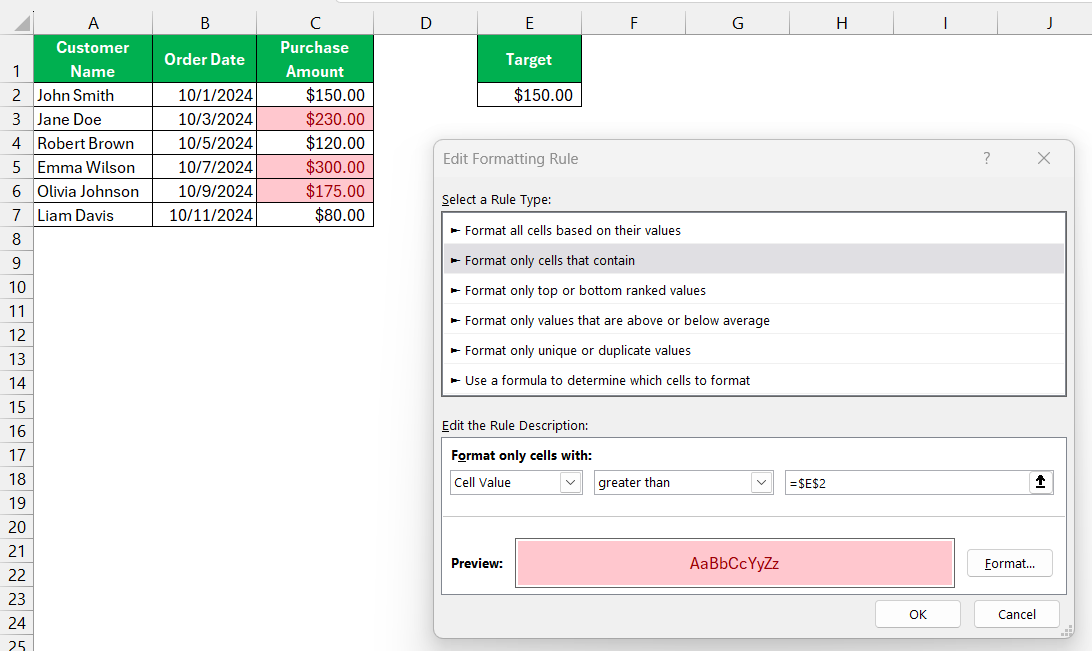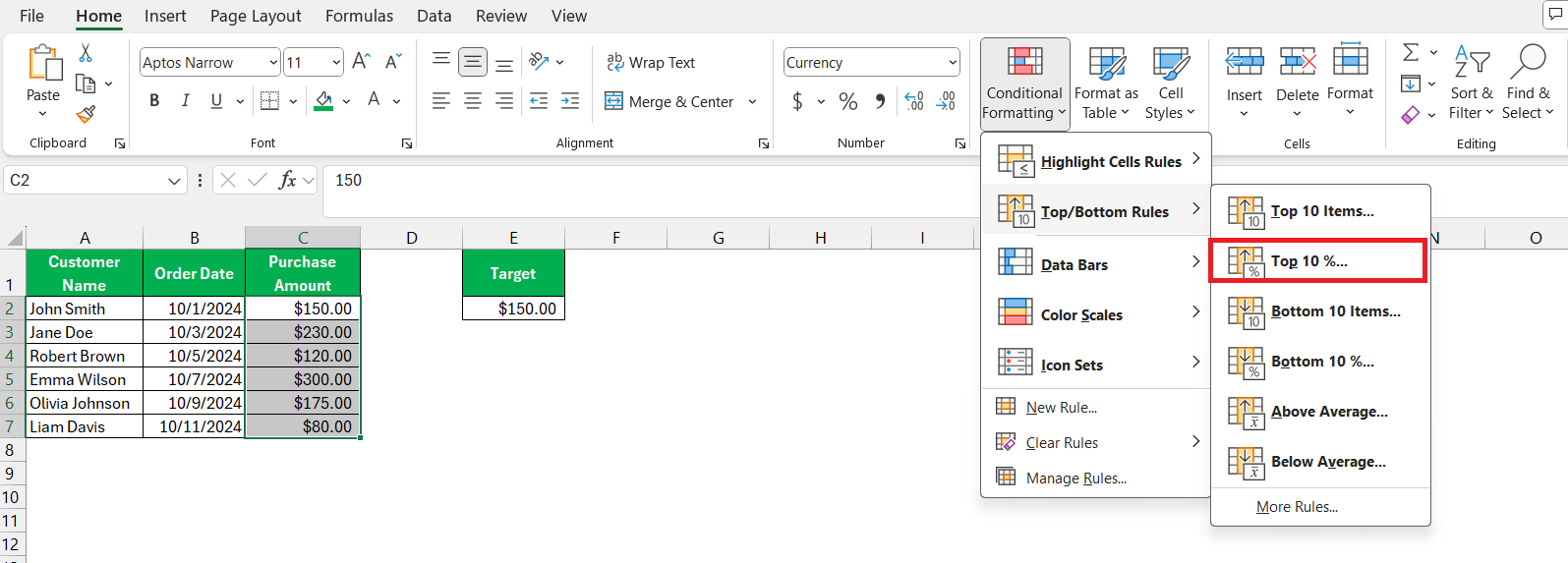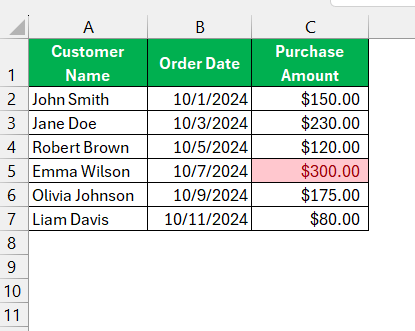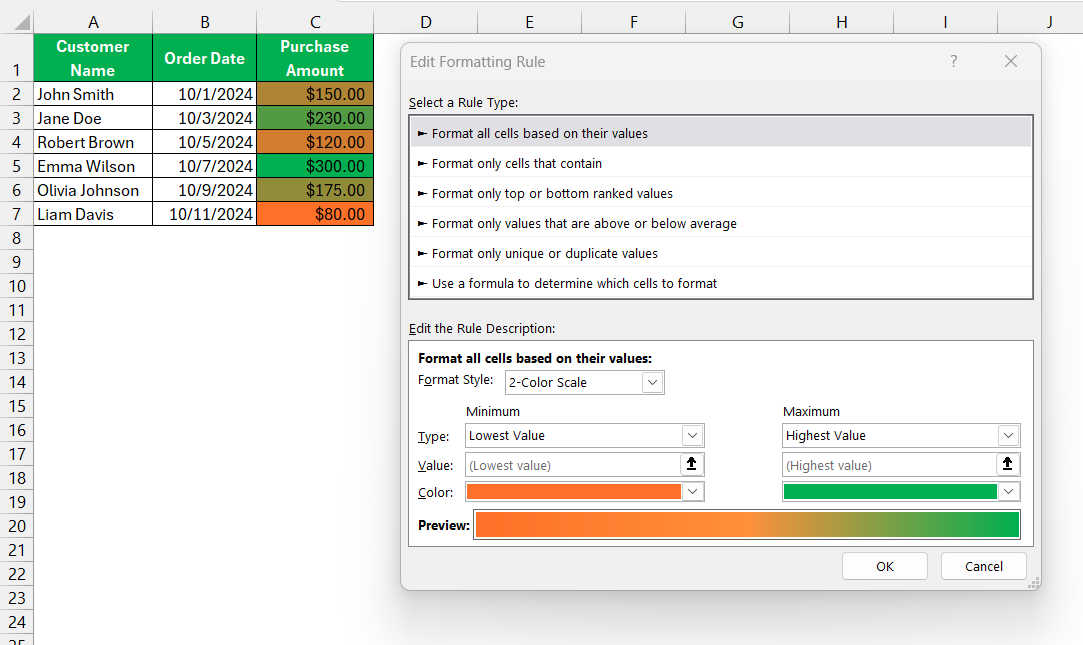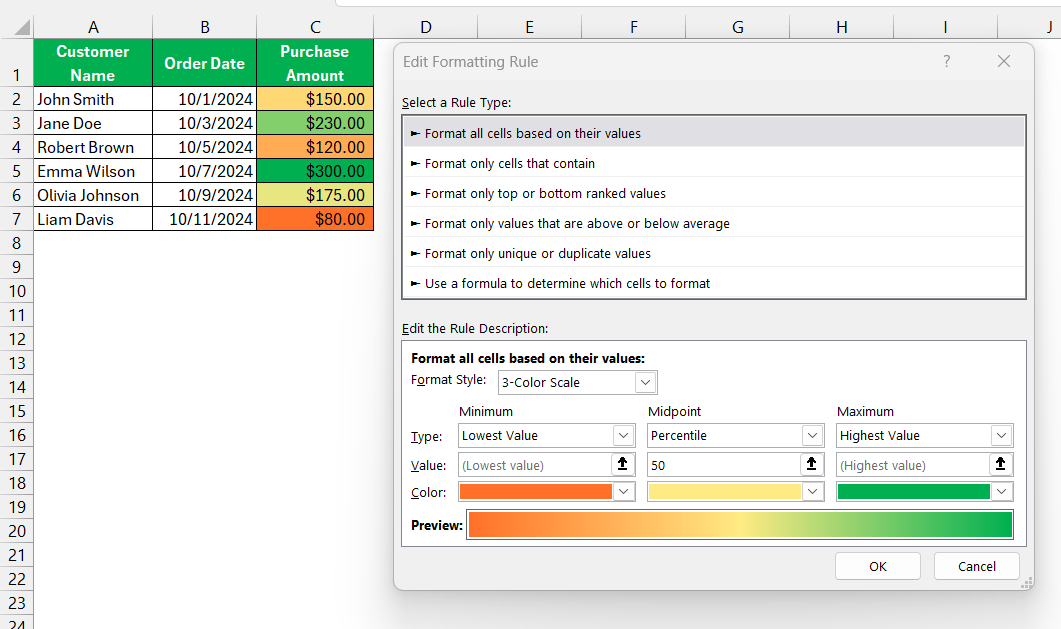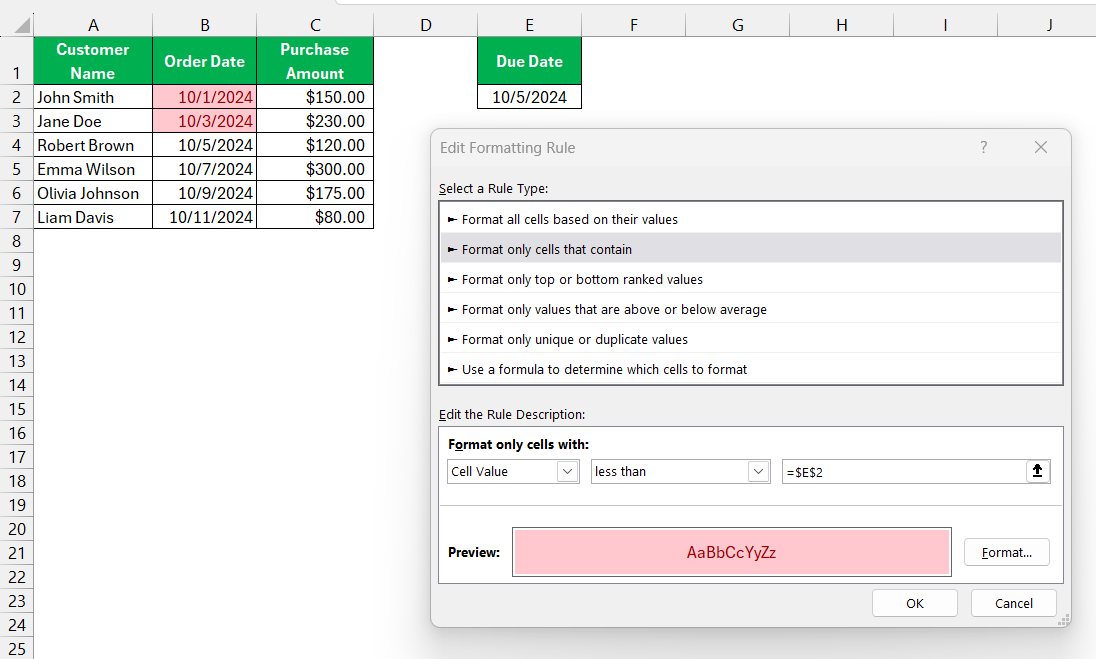Color coding cells in Excel has been a game-changer for me when it comes to organizing and visualizing data. Adding colors to cells can make it much easier to see patterns, identify outliers, and keep track of important information. In this article, I’ll walk through the steps on how to color code cells in Excel using conditional formatting. Let’s dive in!
Key Takeaways:
- Color coding enhances data visibility by making patterns, outliers, and essential information easier to spot in Excel.
- Conditional formatting adds dynamic color coding by automatically changing cell colors based on rules, like highlighting overdue dates or low sales figures.
- Two-color and three-color scales create gradients to represent data ranges, making it easy to visualize performance levels or progress at a glance.
- Using formulas allows tailored color coding, enabling complex conditions like highlighting cells based on the values in other cells.
- Effective color coding techniques include moderation and clarity, such as choosing distinct colors, using legends, and avoiding overuse to keep sheets readable and professional.
Table of Contents
Introduction to Color Coding in Excel
The Power of Visualization in Data Management
Visualizing data effectively is indispensable in today’s fast-paced business environment. When I manage large sets of information in Excel, color coding cells is one of my go-to strategies. It’s not just about making spreadsheets look attractive; it’s about quickly conveying insights and highlighting critical areas that demand attention.
Color coding can streamline workflow, reduce errors, and enable faster data interpretation, helping teams and individuals make data-driven decisions swiftly.
Color Coding Basics for Enhanced Efficiency
Getting to grips with the basics of color coding in Microsoft Excel is like discovering a shortcut to efficiency. By setting colors to represent different data attributes, we can cut through the noise of bland numbers and get straight to the insights that matter. It’s a simple yet powerful approach: for instance, imagine trying to find needles in a haystack, now imagine those needles are brightly painted.
That’s precisely how color coding helps in distilling essential information from a spreadsheet. A red cell might signal a budget deficit, while a green one may indicate a financial surplus, making it easier to pinpoint areas needing attention without poring over every figure.
Setting Up Your Excel Workspace for Color Coding
Organizing Data for Effective Formatting
Before diving into color coding, organizing our data is crucial. This sets the stage for effective formatting down the line and ensures that important details stand out clearly. We start by entering all relevant information in a structured manner, which could involve creating a coherent table layout using rows and columns that logically group similar data together.
For example, by arranging customer names, order dates, and purchase amounts into separate columns, we create a clear path for applying color codes that will later guide our eyes to the most pertinent information.
This initial step not only aids in formatting but also enhances the overall accessibility of the information housed within our spreadsheet.
Understanding the Conditional Formatting Feature
Conditional formatting in Excel is a game-changer that allows us to amplify the impact of our data by setting rules for dynamic cell formatting. This feature adjusts the formatting of cells based on the values they contain, allowing us to visualize patterns and trends instantly.
Whether it’s highlighting sales metrics that exceed a target, or drawing attention to overdue project tasks, conditional formatting automates the color coding based on specific conditions we set.
If we picture ourselves as detectives solving a case, this tool is our forensic kit, drawing out the hidden stories within the raw data.
Step-by-Step Guide on How to Color Code in Excel
Accessing the Conditional Formatting Menu
To tap into the potential of conditional formatting, we first access the feature through the Excel ribbon. After selecting the cells we want to format, we go to the ‘Home’ tab. From there, in the ‘Styles’ group, we find and click on ‘Conditional Formatting.’
This action reveals a dropdown menu brimming with pre-set and customizable formatting options. It’s like opening a treasure chest of data visualization tools, where we can select from an array of possibilities to bring clarity to our data. The next step? We’ll dive into crafting our color-coding rules.
Applying Simple Color Rules for Quick Insights
Once in the Conditional Formatting menu, applying simple color rules is a breeze. We can select from several quick analysis options such as ‘Highlight Cell Rules’ or ‘Top/Bottom Rules’, which allow us to define which cells to color based on their content, like all entries greater than a certain value, or the top 10% in a dataset.
This form of color coding provides immediate visual cues, transforming a monotonous grid into an informative map that quickly directs our focus to points of interest or concern.
It’s a swift yet significant step towards translating data into tangible insights.
Advanced Color Coding Techniques
Utilizing Two-Color and Three-Color Scales
Diving deeper into conditional formatting, we encounter the powerful two-color and three-color scales – tools that create smooth gradients to represent ranges of data. When we use a two-color scale, cells smoothly transition between two colors based on their values, painting a vivid picture of low-to-high, or vice versa.
The three-color scale adds a midpoint, providing a gradient from, for instance, red through yellow to green, which can be perfect for visualizing performance levels from low (red) to high (green) with a cautionary midpoint (yellow).
These gradients serve as intuitive gauges that communicate the status of our data at a glance.
Employing Formulas for Dynamic Color Coding
When we want our color coding to be smarter and more tailored, employing formulas in conditional formatting comes into play. This approach allows us to set nuanced rules that go beyond the basics, such as color-coding a cell based on another cell’s value or the outcome of a custom formula.
For instance, we can create a formula to highlight all dates past due date (mentioned in Cell E2) in red.
By combining formula logic with color coding, we bring a level of dynamism to our spreadsheets, making them not just informative, but interactive.
Leveraging Color Coding for Various Applications
Tracking Project Progress with Color-Coded Statuses
Tracking project progress becomes straightforward and visually intuitive with color-coded statuses. For instance, I often use a green-yellow-red system similar to traffic lights: green signifies tasks that are on track or completed, yellow indicates tasks that require caution or are approaching deadlines, and red alarms us to delays or serious issues.
This method not only simplifies monitoring but is also understood universally across different teams. Color coding in this context not only emphasizes the status of each element but also fosters team collaboration and efficiency as everyone can quickly grasp the project’s progression.
Using Color to Highlight Key Financial Data
When dealing with financial data, I’ve found color coding to be indispensable. Drawing from established best practices, inputs such as assumptions or drivers are marked with a yellow background and grey border, whereas historical data can be left unformatted for a clear distinction.
Utilizing colors in this manner not only guides the user to where they can interact with the model but also segments data to prevent confusion between what is historical and what is variable. This technique ensures that key financial figures stand out and that the logical flow of the spreadsheet remains intact for anyone who uses it.
Tips for Effective Color Coding
- Avoid Overdoing It: Too many colors can make a sheet harder to read. I stick to one or two colors for highlighting key data.
- Choose Color Wisely: I use colors that contrast well with the text, and I’m mindful of colorblind users if others will be viewing the sheet.
- Use a Legend When Needed: If the colors I’m using aren’t self-explanatory, I add a small legend to the side to clarify.
FAQ: Mastering Excel Color Codes
How to do color coding in Excel?
To do color coding in Excel, select the range of cells you want to format, navigate to the ‘Home’ tab, click on ‘Conditional Formatting‘, and then choose from simple rules, color scales, or set up new rules with custom formulas for dynamic cell coloring. It’s straightforward and can instantly transform your data into a visually digestible format.
How to make a cell in Excel automatically change color based on data?
To make a cell in Excel automatically change color based on data, use the ‘Conditional Formatting’ feature. Select your cells, go to the ‘Home’ tab, choose ‘Conditional Formatting’, pick ‘Highlight Cell Rules’ or ‘New Rule’, and set the criteria for the cell color to change dynamically as the data is updated.
How do I format cells based on other cell values or criteria?
To format cells based on other cell values or criteria, select the cells to be formatted, click ‘Conditional Formatting’ on the ‘Home’ tab, choose ‘New Rule’, and then ‘Use a formula to determine which cells to format’. Enter the relevant formula, and set the format you wish to apply based on the criteria being met.
Can I save and apply my color coding schemes to other spreadsheets?
Yes, you can save and apply your color coding schemes to other spreadsheets. Create a template with your preferred rules, or copy the cells with the applied conditional formatting to another sheet. Use the Format Painter tool for quick application across multiple worksheets or workbooks.
What are some alternative methods to color code cells without using conditional formatting?
Aside from conditional formatting, you can manually color code cells by selecting them and then applying a background color found under the ‘Home’ tab in the ‘Font’ group. Another method is using data validation combined with the cell’s fill color to create a drop-down list with color-coded options. VBA macros can also automate coloring based on specified criteria for more advanced users.
John Michaloudis is a former accountant and finance analyst at General Electric, a Microsoft MVP since 2020, an Amazon #1 bestselling author of 4 Microsoft Excel books and teacher of Microsoft Excel & Office over at his flagship MyExcelOnline Academy Online Course.

